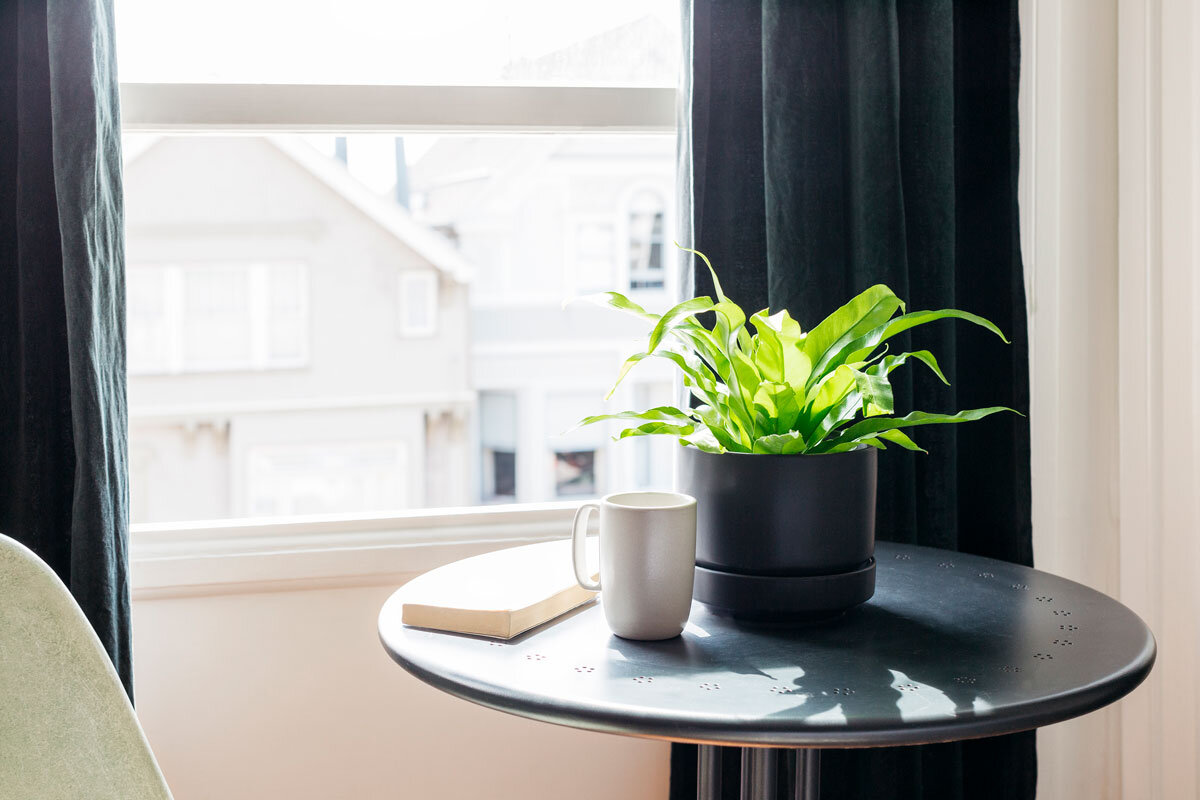Though houseplants generally live indoors, they, too, note the changing of the seasons. Fall typically means less light, colder temperatures and drier air. Read up on some simple fall plant care tips and set your indoor greenery up for success.
Adjust your watering schedule (hint: water less frequently!)
Less light and cooler temperatures mean that your plant may not need as much water as it did during the summer. Make sure to always check the soil before watering and, if necessary, give your indoor plant a few extra days in between waterings to dry out.
Excess moisture in your plant's soil is dangerous for a handful of reasons (most notably root rot), but maybe none more annoying than insects, specifically flying insects like gnats and mosquitos. While typically harmless, always make sure to treat any infestations as quickly as possible to prevent serious damage.
Make sure your plant is getting enough light
As the days get shorter and shorter, make sure your plant is getting enough light: plants that sometimes do well in one area of your home may not be as happy as they were before.
Signs that your plant is not getting enough light may include pale or yellowing leaves, leggy branches, or leaning towards the light. If you suspect your plant needs more light here are some things you can do:
The best way to make sure your plant is getting enough light is to move them closer to a window, preferably one that is south or east-facing if you’re in the Northern Hemisphere.
If your house has limited natural lighting you might want to consider using an artificial light source to meet your plant’s needs.
Clean its leaves of any dust or grease to make sure they can absorb as much light as possible.
Rotate your plant every few weeks to ensure the entire plant gets enough sunlight.
Scale back your fertilizing routine
The best time to fertilize your plant is when it’s actively growing in the spring and summer. As the winter approaches, they become less interested in new growth, which means they're less hungry and less thirsty. Here are simple feeding adjustments to make:
Feeding - shift to fertilizing once a month. Our natural plant food, Boost Vitaminé is an organic plant food with just four ingredients, gentle enough to use year round.
Exceptions for new growth - if your plant decides they're up to the task and it sends out new growth, they can have a snack afterward. Never fed? If you've never fertilized your plant and you’ve had it for more than 4 months, give it a nutrient boost. We suggest starting with diluted liquid fertilizer and observing how your plant responds.
Remember every plant species has different wants and needs, so read up on your plant friends and monitor their changes closely to see what works best.
Watch the temperature
We might love getting cozy in the fall but our houseplants are sensitive to temperature changes. Too cold and they’ll get a kind of frostbite, run the heat too much and you risk drying out their soil.
Indoor plants generally come from tropical regions so they prefer temperatures between 65 and 75 degrees F. Make sure the leaves of plants aren’t touching a windowpane that gets too cold or sitting in front of a vent where they’ll get lasted with air. To mitigate dryness, mist your plant throughout the week, or use a humidifier.
Prune yellow leaves
While it is natural for the leaves of outdoor plants to turn yellow and drop their leaves in the fall, indoor houseplants should be able to stay green all year with the right care. Your plant’s leaves might turn yellow for any of the reasons mentioned above, so carefully monitor the conditions in which you are keeping it. It’s okay to remove dead leaves in the fall but save any major pruning for the growing season!
Good luck, plant parent! And head back to our blog for more simple plant care tips for your indoor greenery.



